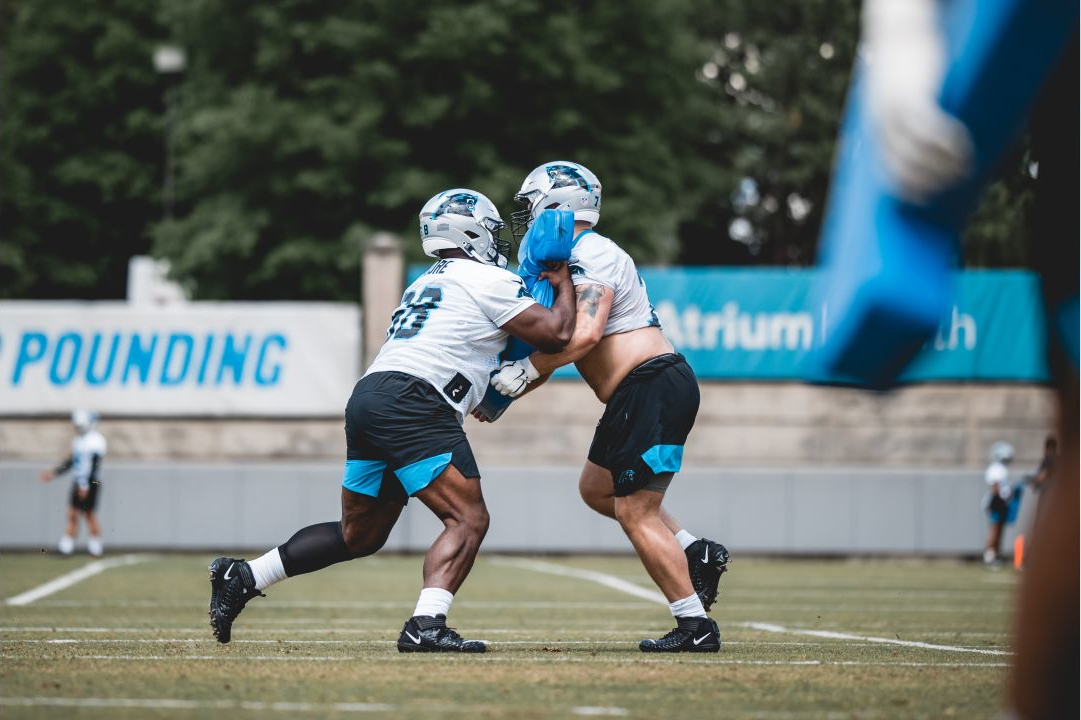There is no one way to create a dominant offensive line in the National Football League. Historically, some have been purchased free agency, while others have been carefully and painstakingly built and developed through the draft. Some teams hit on an offensive line right away, while others have to take time. Some teams succeed in building offensive lines, and plenty fail.
For the longest time, the Carolina Panthers have fallen somewhere in the middle: They’ve had talented offensive linemen over the past decade and have had some success at developing linemen through both the NFL Draft, undrafted free agency, and the fringe free agent market. What they haven’t been able to do, however, is field a dominant offensive line, with the left tackle spot being under almost constant flux since Hall of Honor member Jordan Gross hung up his cleats at the end of the 2013 season.
It should therefore come as little surprise that building and developing an offensive line has been a major priority for Matt Rhule, and as with other areas of the Panthers’ roster this is an area where his approach has focused on young players who the coaching staff can continue to develop.
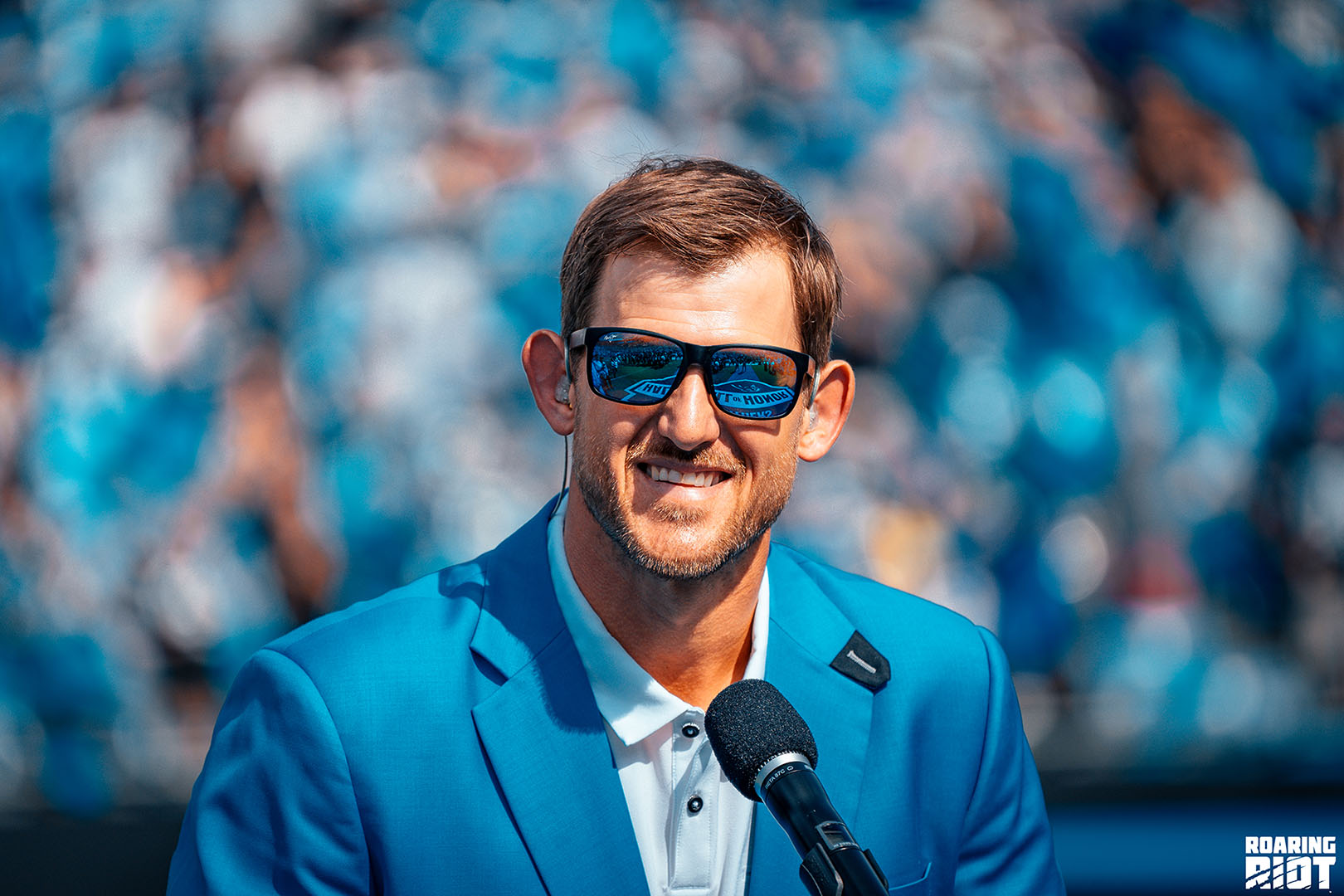
2019 Hall of Honor Inductee – Jordan Gross
In 2020, the Panthers fielded an offensive line comprised largely of stopgaps as they tried to make up for the offseason losses of trusty guards Greg Van Roten (left in free agency) and Trai Turner (traded). Journeymen like Chris Reed and John Miller as well as former draft pick Dennis Daley were the primary options at guard, and with Russell Okung dealing with injuries throughout the season, the long-maligned left tackle position was manned by former undrafted free agent Trent Scott and former second-round pick Greg Little.
As with other recent offensive lines the Panthers have fielded, the results were mixed: Even after losing Christian McCaffrey for most of the season, Carolina’s line still helped the team run for 1,704 rushing yards collectively (albeit at a rate of 4.2 ypc that ranked 22nd in the NFL). In pass protection, they allowed 36 sacks which put them pretty much in the middle of the pack both in absolute terms and as a proportion of passing downs. There were times when the offensive line got in a rhythm and had banner performances, but there were also times where they were bullied and run over by opposing defenses.
In short, the offensive line wasn’t the liability it has been in some years past, but it was far from a strength.
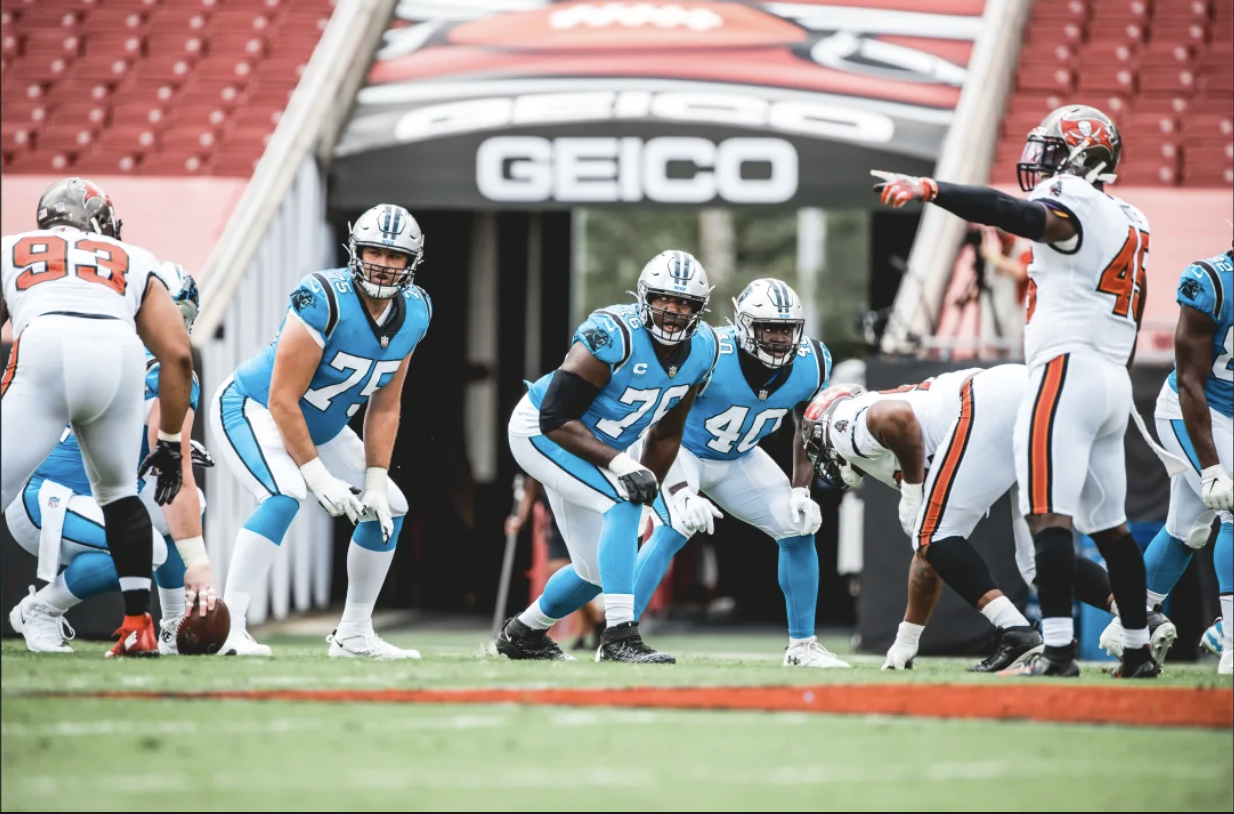
Photo Credit: Brandon Todd/Carolina Panthers
With their 2020 line offering a starting point, the Panthers have invested a chunk of resources into their offensive line through free agency and the 2021 NFL Draft. Having signed Pat Elflein and Cam Erving on the first day of legal tampering, the Panthers followed that up by selecting BYU’s Brady Christensen in the third round and Alabama guard Deonte Brown in the sixth with Grambling State’s David Moore signed as a priority UDFA.
Adding three new young players into the mix is important for several reasons. Firstly, it fits the larger pattern of the Panthers looking to get younger across the board and create a roster that can grow together. It also gives the Panthers a chance to create a long-term solution to their offensive line problem, which can hopefully form the backbone of the roster for years to come.
This is certainly an approach that has worked out well for other teams around the NFC South, with the Saints unit being anchored around Terron Armstead (3rd round, 2013), Andrus Peat (1st round, 2015) and Ryan Ramcyzk (1st round, 2017). The result has been one of – if not the – best offensive lines in the NFL over the last four seasons.
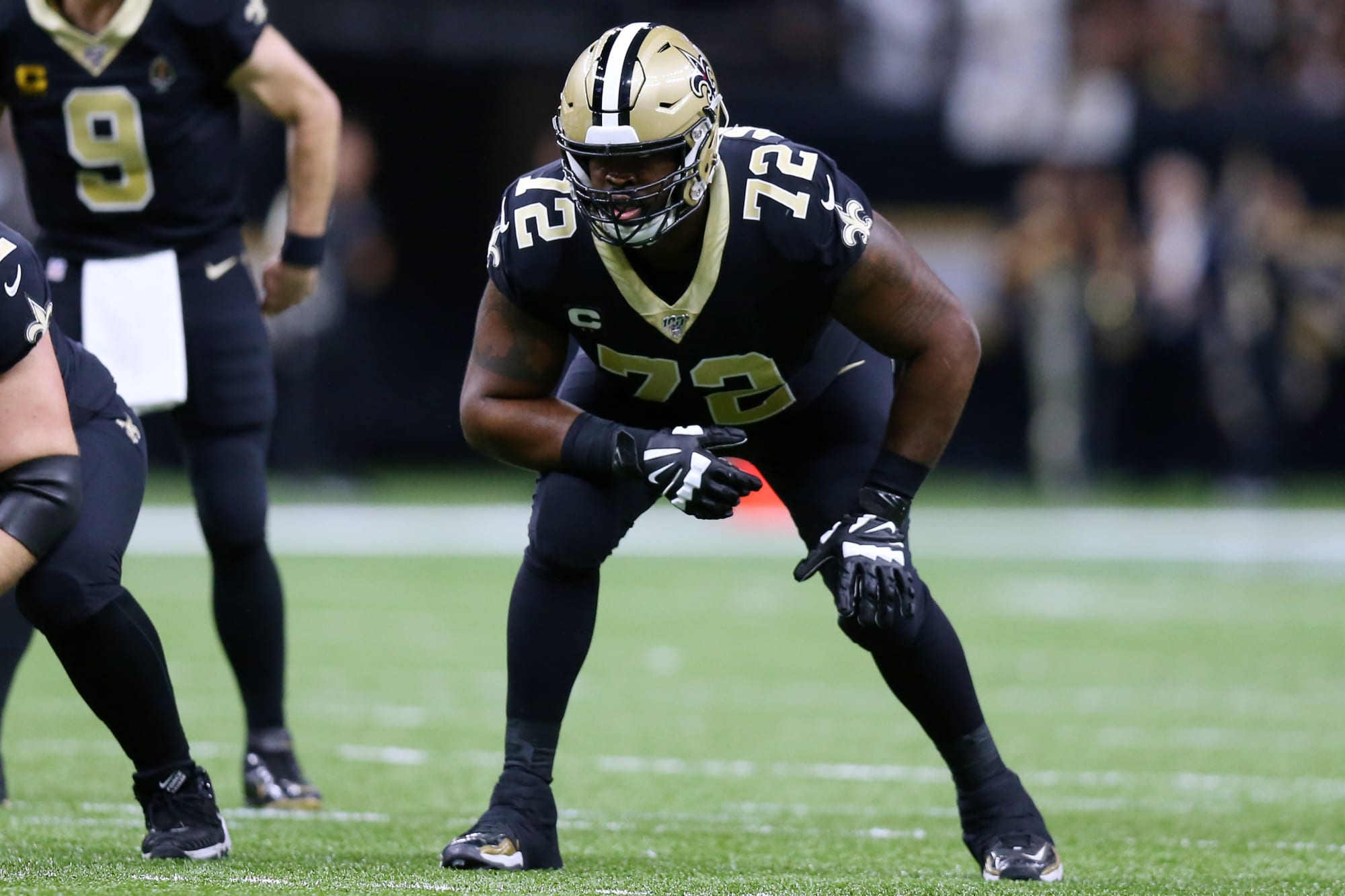
Photo Credit: Jonathan Bachman/Getty Images
However, while the Panthers have brought in three young, talented players who have a chance to become part of the core of their offensive line, the question that remains to be answered is where exactly they all fit in.
Outside of the right tackle position manned by Taylor Moton, very little on the Panthers’ offensive line is settled: Left tackle and both starting guard positions are all up for grabs., while at center, Matt Paradis is entering the final year of his contract and will turn 32 during the season, making his long-term future on the roster highly uncertain.
This is likely to have been a major factor, along with the coaching staff’s consistent focus on the value of positional flexibility, in the fact that the Panthers had their linemen cross-train all across the offensive line during last week’s rookie minicamp as part of the coaching staff’s process of determining their strengths and weaknesses.
“I think with your starting five or six, you’re trying to put them at the position that they play best. And then after that, we’re just trying to see how much versatility we can get out of some of these other guys,” Rhule told reporters last week.
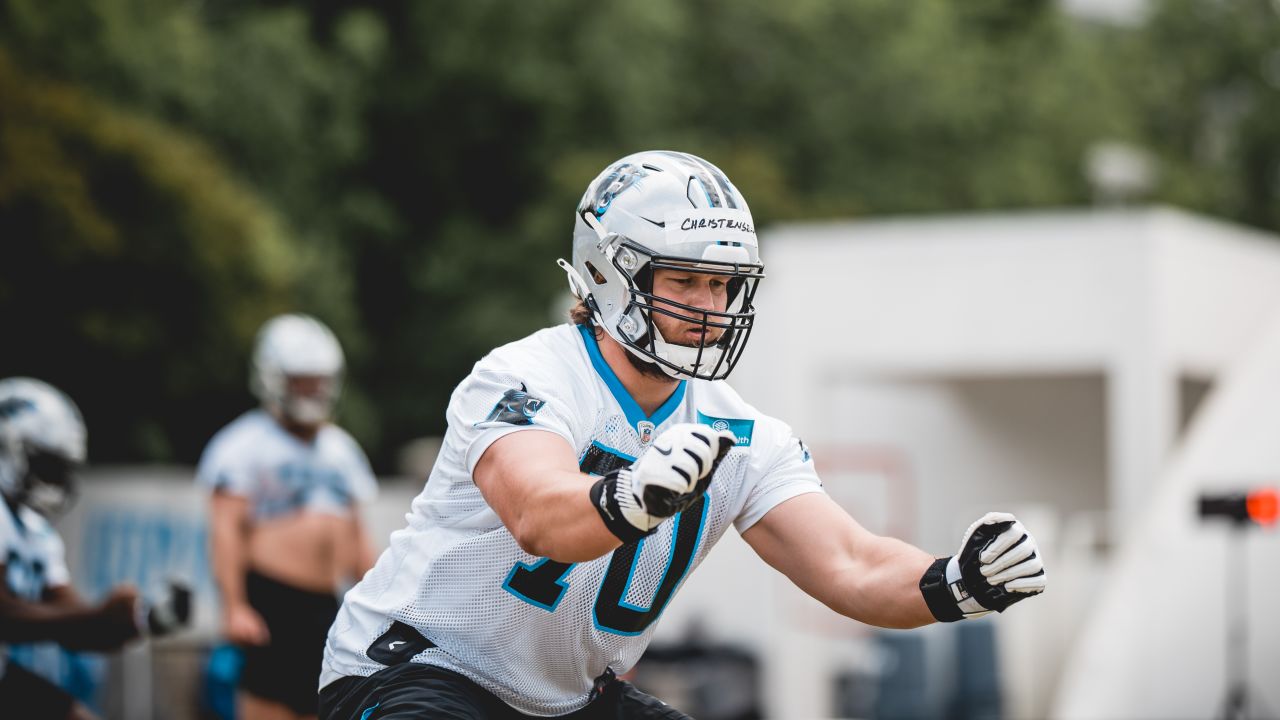
Photo Credit: Carolina Panthers
For players like Brown and Moore, who will likely have to work their ways up the depth chart should they make the team, position versatility is especially important. On all offensive lines, a guard who can also play center or a tackle who can also play guard is indubitably more valuable than a dedicated tackle or dedicated guard. Especially on game days, where injuries could mean a player is suddenly thrust into action at whatever position on the offensive line must be filled.
“The best way to be up on game day is to be a versatile guy. So, I think this is a time now, even through OTAs, where you can move guys around, experiment to find out not only what’s their best position, but how they can get on the field the quickest and how they can provide the most depth for us,” said Rhule. “And then as we get in training camp, we really have to zero in on some of those things. But especially with a 17-game season, we know there’s gonna be some attrition at times, there will be some shuffling of the deck at points.”
The need to be flexible applies to every player on the line. Some may remember Taylor Moton starting the 2018 season at left tackle following the injury to Matt Kalil, before moving back to his more natural position at right tackle. Those with even longer memories may recall Jordan Gross beginning his career at right tackle before moving left.
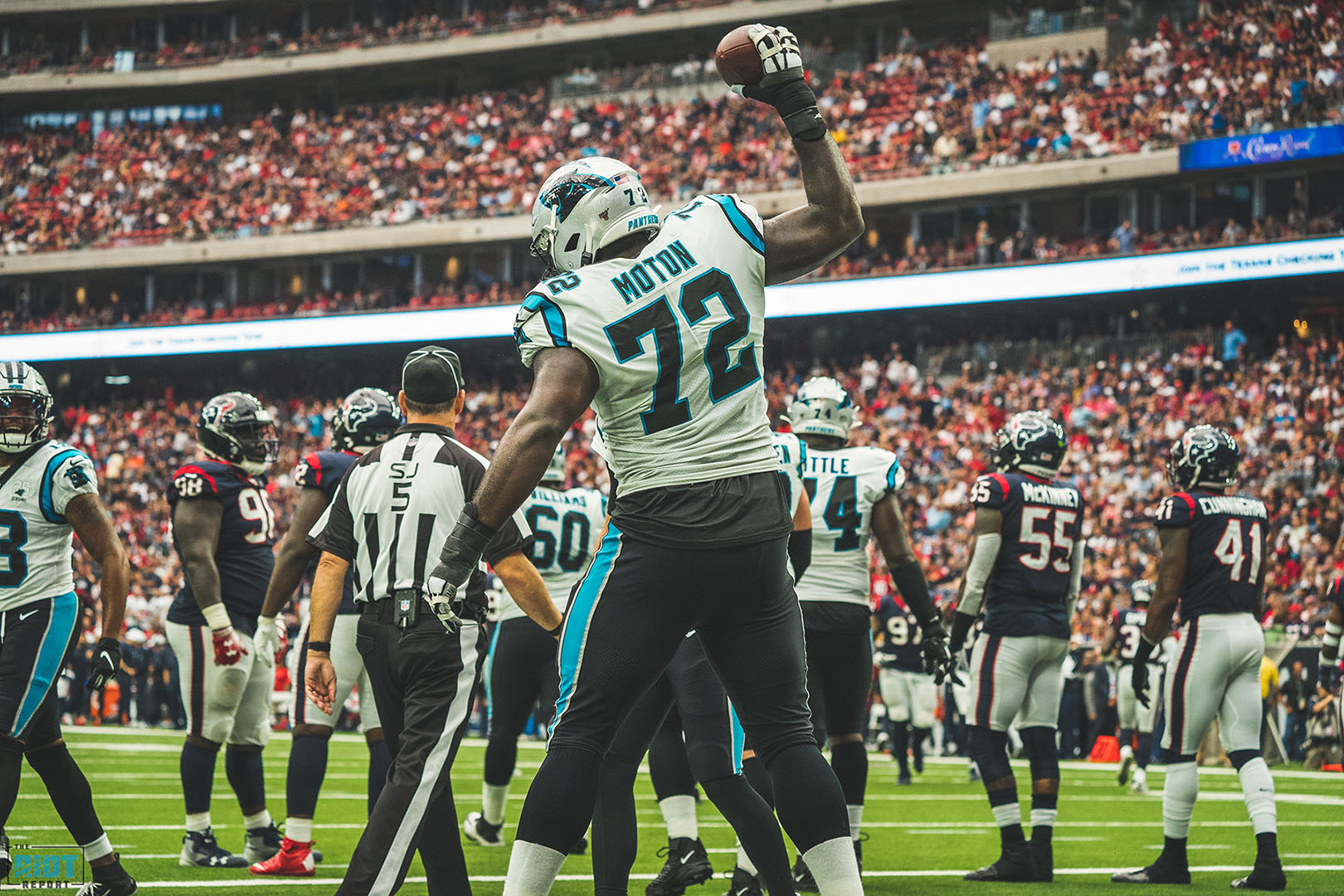
Taylor Moton finishes the touchdown drive his way.
There is possibly no player this is more relevant for than Brady Christensen, with the Consensus All-American being put through his paces at several spots, with Rhule describing him as having “four-position flexibility.” While the Panthers hope that Christensen can stay at tackle, he certainly has the skillset to move inside if needed.
“It’s different in each position, but you’ve got to have great feet whether you’re playing guard or tackle,” explained Christensen. “You’ve got to be physical, you’ve got to be able to run off the ball – That’s a big thing we’re focusing on right now is just running off the ball and being really physical. So you need that at all five spots. And I feel like I can do that whether it be right tackle or left guard. I feel like I can do those things.”
Where Christensen will end up playing in 2021 is yet to be seen, let alone where he will play beyond that, but from what the Panthers’ coaches have said so far, they are going to try as many players in as many spots as possible and trust that the competition (a persistent theme with Rhule) allows the best players to rise to the top of the depth chart at each spot.
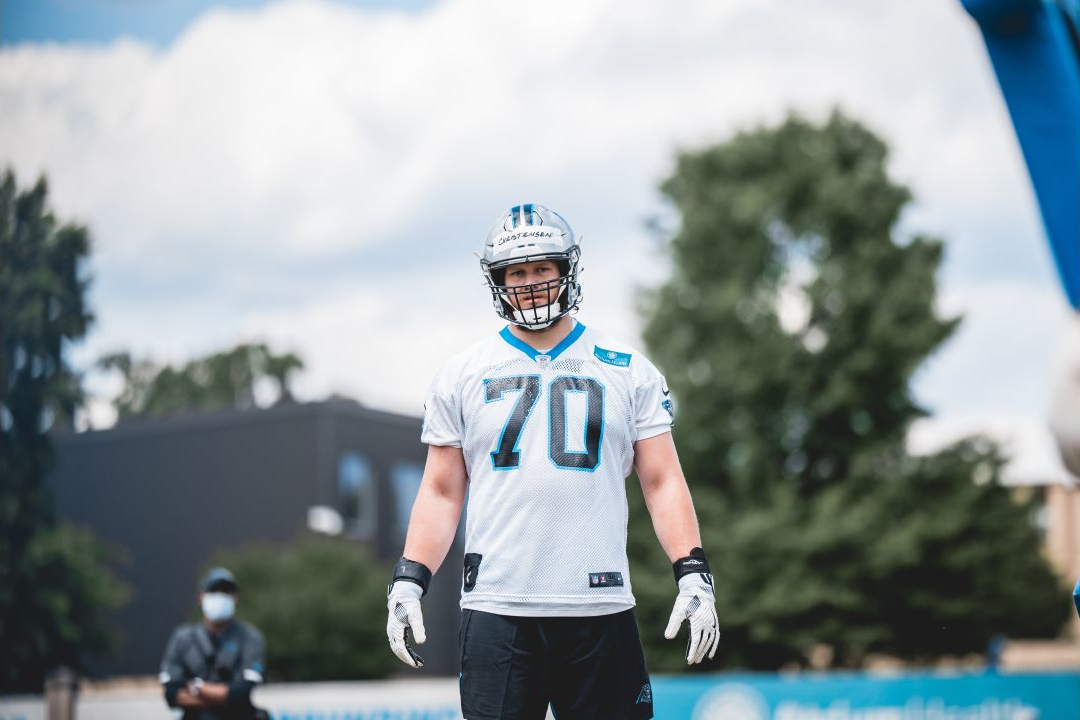
Photo Credit: Carolina Panthers
A lot needs to happen before the Carolina Panthers’ offensive line becomes one of the NFL’s best, and while all three of their rookies developing into high-level starters would be a home run for the Panthers’ scouting department and coaching staffs, it’s more realistic to hope that at least one player from this group becomes part of the answer on the offensive line.
The best thing the newest crop of Panthers offensive linemen have working in their favor is the time to develop, an openness to be malleable, and the willingness to try and see what more they can do. Exactly how they take advantage of the opportunity that’s available to them in their earliest NFL days will go a long way towards helping determine whether Brady Christensen, Deonte Brown, and David Moore can become integral parts of the next generation Carolina Panthers offensive line.
(Top photo via Carolina Panthers)

